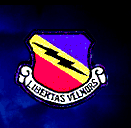 | |||
 | |||
 | |||
 | ||
This chapter is accompanied by a video recording of the actual tape made during the events described below. To see the following video clip, you must have RealPlayer installed on your computer system. This video clip is best viewed after reading the actual chapter in Keith Rosenkranz's book, as he describes in great detail the sounds and sights you are about to see and hear. If you do not have a copy of his book yet, you can order one Toward the end of the Vietnam War, the Nixon administration began to take a hard look at the increasing cost of military weapon systems. Two systems in particular, the F-14 Tomcat and the In the late 1960s, Maj. John Boyd, Pierre Sprey, and Col. Everest Riccioni, a group dubbed the "Lightweight Fighter Mafia," began to
promote the concept of a less expensive lightweight fighter that could more flexibly challenge Soviet aircraft. In 1972, requests for proposals were sent to the aerospace industry to build this new fighter. One of the finalists was General Dynamics, which proposed a single-engine fighter called the
Twenty-one months after the contracts were awarded, General Dynamics became the fist to unveil its new prototype. The sleek new fighter, painted red, white, and blue, was armed with The YF-16 was the first of two prototypes to make it into the air. In January 1974, a General Dynamics test pilot named Philip Oestricher was performing a high-speed taxi test. During the test, he discovered a problem with the horizontal stabilizer, which caused the aircraft to inadvertently lift off the ground. Instead of risking a high-speed abort,
Oestricher allowed the aircraft to fly and was airborne for approximately six minutes before safely landing.
| ||